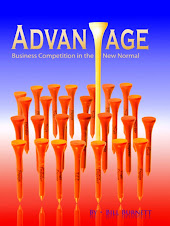Analysis is the act of discovering what existing knowledge we have about a particular object or problem.
Analysis is the process we go through to define a problem. If we are going to err in coming up with the solution that gives us competitive advantage, then the obstacle hides here. Why is that?
Often, when we go through this problem definition process we start with something like “Let’s lay out what we already know.”
Unfortunately, the way the human brain works, when we are very familiar with a topic or product group, or process, or business model, our brains have already gone through a process of efficiency. Our brains determine what is relevant, and what can be ignored. It blocks out the stuff that is not relevant to the enterprise. This gives the brain the best opportunity to focus on what is relevant.
A simple example of this is when you are holding a conversation in a busy coffee shop. You can have this conversation because your brain allows you to ignore: the music playing from the sound system; the activity behind the counter as the baristas make their drinks; a staff member going around cleaning up tables and straightening newspapers; the fire burning in the fireplace; traffic zooming by outside the window, other patron’s conversations near by, and many other stimuli.
Unfortunately it is in the space that the brain is ignoring that the opportunity hides. If you are too close to a problem it is because “what you already know” will not include the subtle changes that make your product, process, business model, etc., less competitive.
It helps if you start with “Let’s lay out what we already believe, recognizing that the truths we hold dear may be missing the mark.” But really, the only way to avoid this frequent and debilitating problem is to bring in a novice brain. The best brain for this is the supersynthesizer brain. You want a supersynthesizer who is broadly knowledgeable but knows little about your problem.






No comments:
Post a Comment